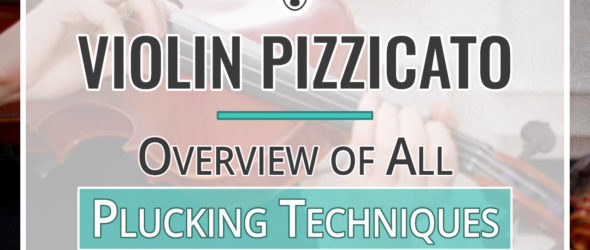
Have you ever wondered “What is all that violin plucking?” Read on to find out!
Most of the time, you use a bow to play the violin and other bowed string instruments. Sometimes, however, you might see a violinist play with his or her fingers, plucking the strings, which creates a very different sound. This technique is called “pizzicato.” The sound is more percussive and shorter than the melodic and sustained notes that come from the bow stroke.
In this article, I’m going to explain everything you need to know about violin plucking, including pizzicato types, how to do it on a violin, and how to improve it!
What Is Plucking a Violin Called?
Plucking a violin is called “pizzicato.” This is a violin technique in which the fingertips are used to create sound by plucking one or more strings. It is used quite often, especially in the orchestral repertoire. Usually, you use the right hand, either holding the bow or not, and sometimes you may also use the left-hand fingers.
The right-hand index finger is most often used for doing pizzicato. The fourth or sometimes the third finger is used for left-hand pizzicato.
On rare occasions, the violin is held like a guitar or ukulele while plucking it.
What Are the Different Types of Pizzicato?
Let’s have a look at all the ways of playing pizzicato on the violin!
Right-Hand Pizzicato
When asked to play pizzicato, you’ll see a “pizz.” in the sheet music and by default, this means the right-hand pizzicato.
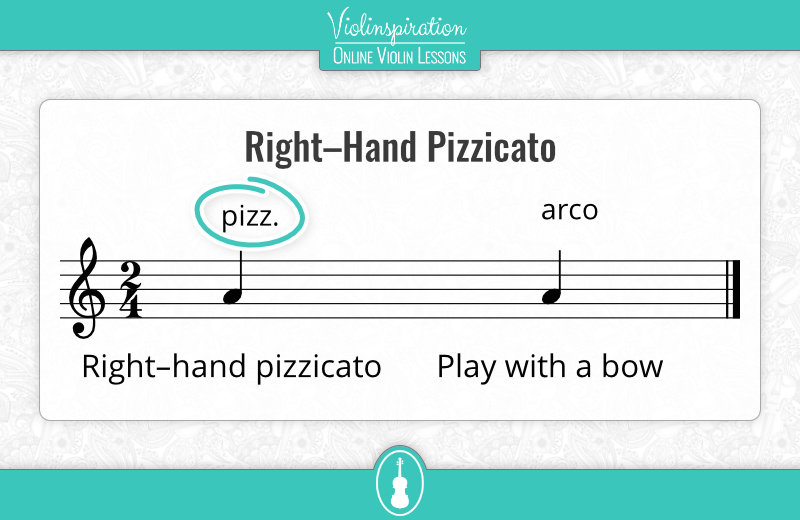
If possible, your bow hold should stay the same as when you play “arco”, except for extending your index finger to play the notes. Play like this until you see “arco” in the sheet music, which means play with the bow. This is used if the pizzicato is only for a few notes and it’s not required to be played loudly (forte or fortissimo).

If there’s a rest between the changes and if the pizzicato is for a long period, you can still hold the bow as best you can, while you place your right thumb on the corner of the fingerboard and start plucking with your index finger.
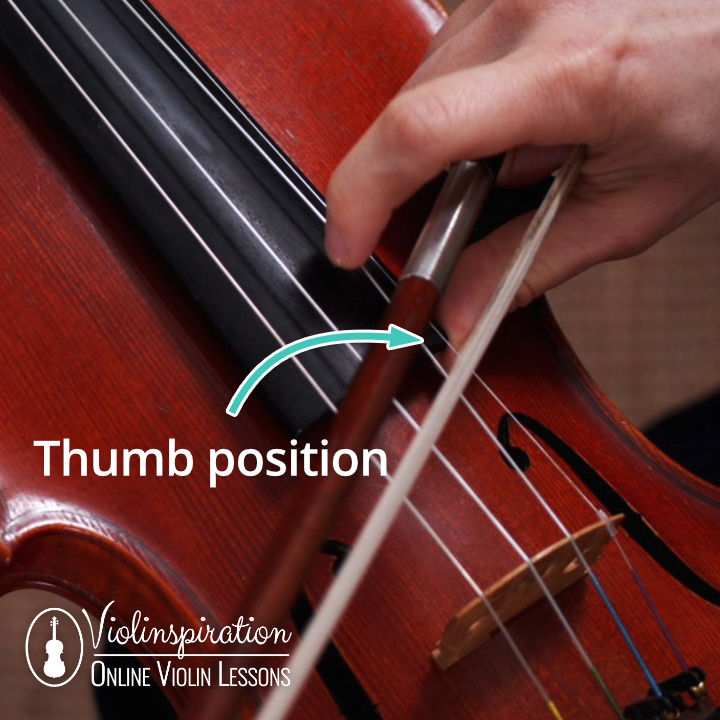
A third way will be to place the bow on the music stand (or your lap if you’re sitting) and again, hold your thumb to the fingerboard and pluck with your index finger.
It might help you to use your middle finger if the part is too fast.
You can put the bow away if there’s a whole part where pizzicato is required, or if there’s a long period that provides enough time to change from pizzicato to arco. Sometimes it is not recommended for student orchestras to put their bows down, as they are not very experienced and they might do rush moves to pick up their bows. And sometimes they miscalculate what is “plenty of time.”
Left-Hand Pizzicato
Left-hand pizzicato is not as common but it is used on several occasions. This technique requires you to lift the bow from the strings and then pluck the string usually with your fourth or third finger. In beginner repertoire, this is mostly used for open strings but it’s not limited to that in advanced pieces. You might also use one of the other two fingers but this is even rarer.
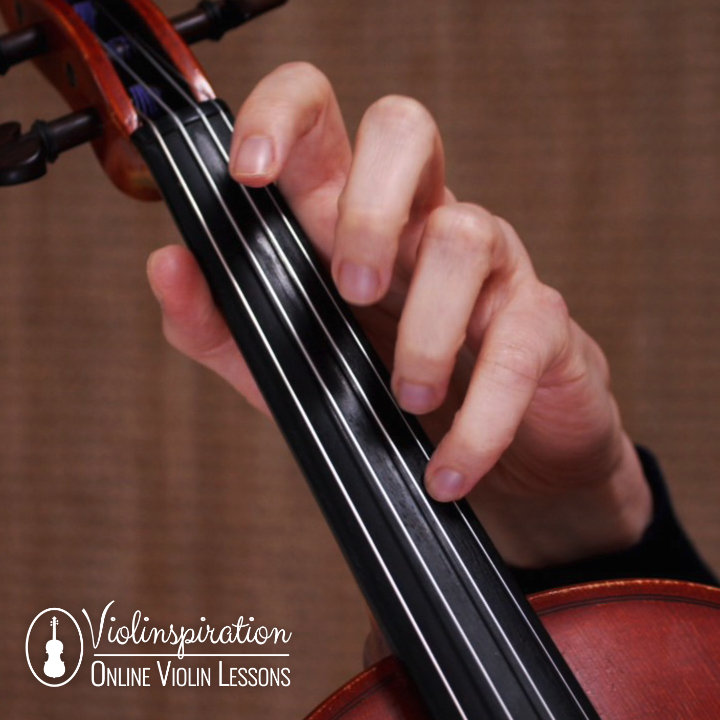
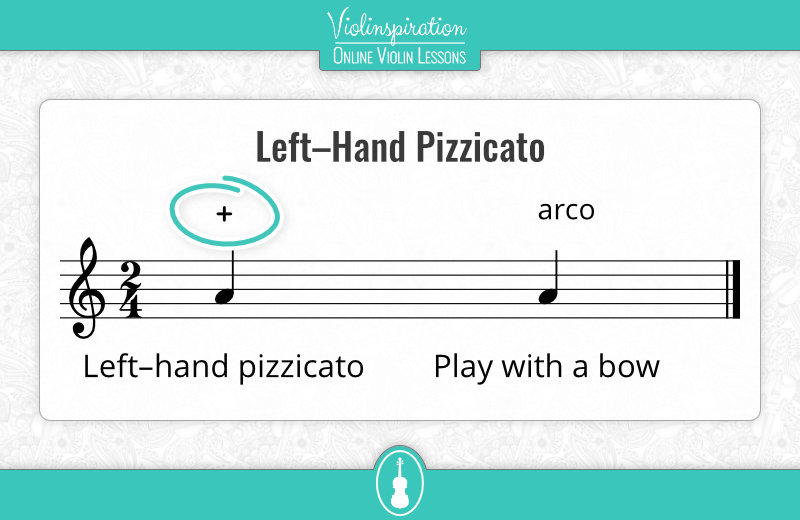
Left-hand pizzicato is distinguished in music notation by placing a small cross above the desired note. You can see it in a few bars of the Polish Dance by Edmund Severn.
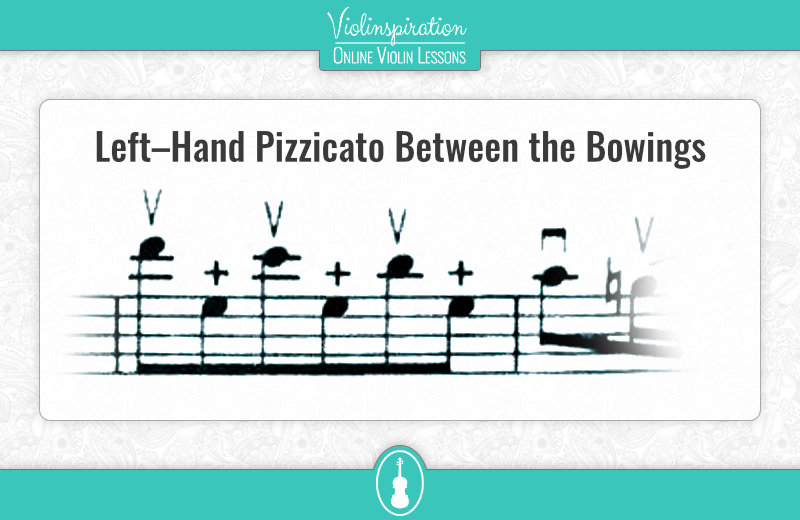
Currently, we’re practicing this piece in the online violin lessons in a group of intermediate to advanced students of Julia’s Violin Academy. Would you like to join us? Request your invitation to the Academy today! Or, if you are already a member, check out the Polish Dance course page.
Quasi Guitara
Rarely, you might see violin players hold the violin in their hands like a banjo or ukulele and play pizzicato with their thumb. This is not common, especially in orchestra repertoire, and it is only used when there’s pizzicato throughout the piece, and mostly as a visual effect. This is much easier to perform as the other fingers are not as strong. A “quasi guitara” indication might be there to show you how to perform the pizzicato.
Nail Pizzicato
An even rarer technique is the nail pizzicato. Normally you pluck the string with the fleshy part of the fingertip but here, you have to do it with your nail. This is not very easy as normally violinists have short nails, and you can’t do it for loud notes cause it might hurt. The result is a more metallic percussive sound.
There’s also a very rare technique that is most famously used on Maurice Delage’s Quatre Poèmes Hindous, which is similar to what guitarists call “hammer-on”: you pluck the string and then immediately stop another note. The second note has little to no sustain so it’s rarely used, if ever. In this particular piece, it is in the cello part, as they are more qualified to play this “slurred pizzicato.”
Bartók Pizzicato
Finally, there’s snap pizzicato, or Bartók pizzicato, where you do a normal pizzicato but you pluck the string with force so much that it snaps back on the fingerboard. Composer Béla Bartók used this a lot and that’s how it got its name.
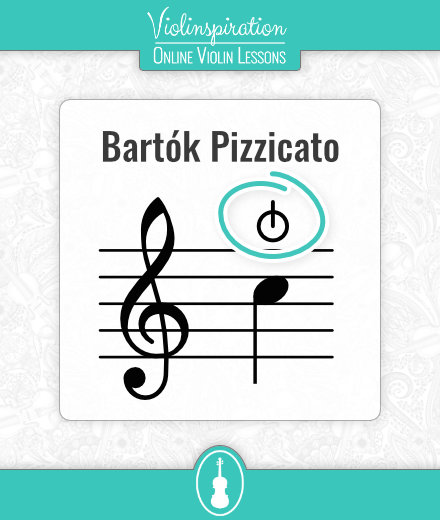
Examples of Pizzicato in Pieces
There are a lot of music pieces that implement the pizzicato technique in its various forms. While it is a very common technique, it is used more often in the orchestral repertoire. Solo repertoire might have a passage or a couple of notes, and it is very uncommon to have a whole piece playing pizzicato but such compositions also exist.
Pizzicato in Classical Music
A good example of right-hand pizzicato is Benjamin Britten’s Simple Symphony, “Playful Pizzicato” part 2.
As you see, all the bowed instruments have placed their bow on the music stand and are using their index finger – some are using their middle finger too. They don’t put their thumb on the fingerboard because of the fast tempo – if they do, it will slow them down.
Pizzicato Polka by Johann Strauss II is like Britten – another example where the bowed instruments play pizzicato for the whole piece.
Left-Hand Pizzicato
There are some advanced pieces that push the boundaries of the technique. An example would be Paganini’s 24th caprice. There’s the main theme and several variations that explore most violin techniques. Variation No. 9 uses left-hand pizzicato extensively (you can see on the video the cross above the notes at 03:07), with a final right-hand stroke.
Another example would be Pablo de Sarasate’s Zigeunerweisen, where some left-hand pizzicato is used and then it closes with the right hand.
Bartok Pizzicato
Finally, in the second part of Béla Bartók’s string quartet, you can hear what is called “Bartok pizzicato.” Of course, the notation is for normal pizzicato, since it was written by Bartók himself.
Violin Plucking in Other Genres
Although pizzicato is not uncommon in folk music, in pop and rock music it is not used that much because it lacks volume, so the instrument will be covered by the band. If you’re using an electric violin, you can amplify it, but I suggest using it on softer spots, and in my opinion, it goes very well with some delay.
Here’s an example of a metal band where the violinist plays pizzicato at the beginning and at the end of the piece.
And here’s an example of a jazz-oriented piece played by an orchestra with extensive use of pizzicato.
How to Do Pizzicato on the Violin
How to do pizzicato depends on the type that you’re going to play.
Right-Hand Pizzicato
- Place your thumb on the corner of the fingerboard.
- Extend your finger so you are able to pluck the string.
- Hit the string either at the height of the fingerboard or in the space between the fingerboard and the bridge.
Tip: You don’t want to be too close to the bridge as you won’t get enough sound.

You can try both maintaining the bow hold and not, as both will come in handy. The first one is a bit more difficult and it needs very good right-hand technique.
Don’t play with your nail (except if it’s asked of you). Instead, use the fleshy part of your finger for the plucked notes: grab the string enough and then release.
Left-Hand Pizzicato
- Hold your left hand as usually in the playing position.
- Grab and pluck a string with your third or fourth finger.
You’ll likely notice that when playing pizzicato on open strings, the sound will be different, and the note won’t have much sustain. If there’s a whole passage, stick to using the fourth finger (or the second if you’re in the second position) so all notes have the same tone.

4 Tips on How to Improve Your Pizzicato
1. Create a Beautiful, Even Tone
Playing open strings pizzicato is fairly easy, but stopping notes is a bit more challenging. Students usually put too much pressure on the index finger, so the string snaps back on the fingerboard and the tone is not as good.
Sure, a percussive sound is something to be expected but you should try to create a good tone regardless. Play scales and focus on the notes – are they all sounding the same?
2. Maintain the Timing and the Rhythm
The most challenging issue when playing pizzicato is the rhythm, especially in a fast piece. It might take too much time to return to the arco, or you may find difficulty in maintaining the rhythm.
To avoid the first problem, here’s how you can practice the change: play one note pizzicato and one arco with a rest between them. Play it as slow as you need and keep focusing on the bow hold. Be careful not to put too much pressure on the bow when returning, as this is a common mistake. Try both piano and forte dynamics. If you’re getting good at it, remove the rests but, again, start very slowly.
To get better at the various rhythmical patterns while playing pizzicato, play a scale and try to use rhythmic patterns, as well as speeding up the tempo as you improve. You should start with quarter notes, then go to eighth and sixteenth notes. After that, try triplets, and if everything is going well so far, try changing from triplets to sixteenth notes. Or, you can think of it as a certain tempo in BPM (beats per minute). I hope that my online metronome with various rhythmic patterns will help you!
3. Standing Position
If you can, study in a standing playing position and not sitting, even though orchestra musicians do sit. This way, your movement will be freer and you won’t have to be as careful starting out – e.g. not hitting your knee with the bow.
4. Let the Note Ring
Be careful to not touch the string while it vibrates, especially with the left-hand fingers. Try to produce a beautiful note with good sound, the less percussive the better.
Also, please remember that intonation is as important as always – your plucked notes have to be as precise as possible.

Conclusion
Pizzicato is one of the most interesting and useful techniques for a stringed instrument, and while it needs time to master it, the first steps are fairly easy.
I hope that this article has helped you learn the violin plucking technique.
If you’d like to get feedback from a professional violin teacher on your pizzicato, make sure to upload your video here (Julia’s Violin Academy members only).























